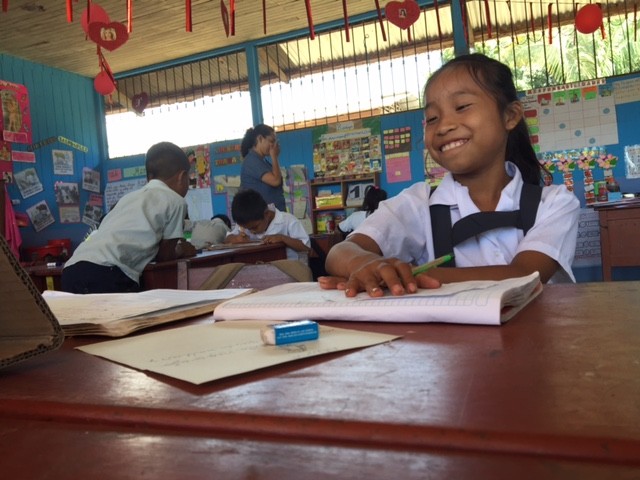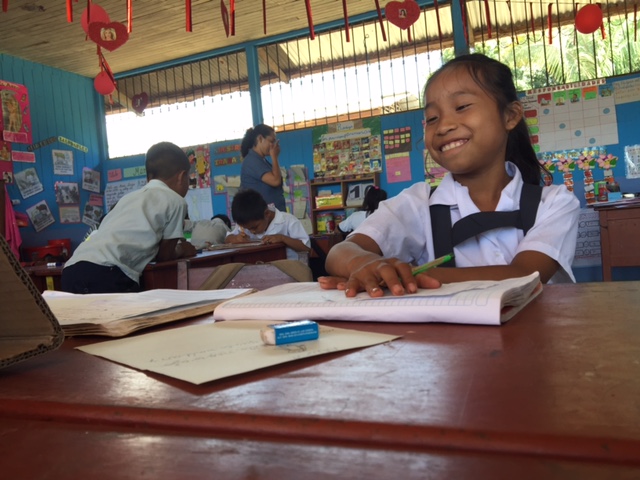
Primary school students in the Peruvian Amazon have lagged far behind in early-grade reading skills. USAID helped introduce new teaching methodologies that increased reading performance scores by 25%. USAID is working with the Government of Peru to scale-up this approach and reach children throughout Peru.
Since the late 1990s, USAID has helped improve education quality in Peru, particularly in the rural and underserved regions of Ucayali, San Martin, and Huánuco. In partnership with the Government of Peru (GOP), local universities, and private and non-profit organizations, USAID trained over 40,000 students, 2,000 teachers, and 500 principals from 565 schools in new methodologies over past three years. Today, education quality in these remote, jungle regions has improved, laying the groundwork for stronger, self-sufficient education systems for Peru’s rural population. By the end of 2017, USAID will fully transfer its education programming and methodologies to local partners and the GOP.
Our Work
IMPROVING RURAL EDUCATION
In the regions of Ucayali, San Martin, and Huánuco, USAID works with regional education directorates and local school administrators to prepare teachers and develop specialized materials for remote, single-teacher, multi-grade classrooms. A cornerstone of this work is the promotion of the “Escuelas Activas” (Active Schools) approach, a pedagogical method emphasizing students’ independent instruction and greater parent and community engagement with the school. Today, USAID continues to promote this methodology in 41 primary schools in the Monzon Valley, a remote and former coca growing stronghold in Huánuco. Second-grade reading scores in USAID-supported schools showed a 65 percent improvement over other similarly situated schools.
ADVANCING EARLY GRADE READING
Since 2014, USAID/Peru has implemented the Amazonia Reads project, part of a USAID regional initiative across Latin America and the Caribbean to improve early grade reading. In Peru, the program aims to significantly increase the percentage of students achieving grade-level standard as measured by Peru’s Ministry of Education. Through an evidence-based approach, the program adapts reading instruction models, helping educators to develop gender-balanced educational resources specific to their students’ needs. The program also provides management support at the regional and school level, reaching 2,340 students in 275 schools. Today, USAID supports the Ministry of Education to develop policies and implement pedagogical practices based upon proven results to improve reading skills.
ACHIEVING GENDER EQUALITY
Traditional public school systems seldom address gender issues related to teaching and learning as an integral part of teacher training and curriculum. USAID encourages gender equality through specialized training and leadership development for teachers and administrators. Education activities cultivate instruction that promotes equal participation in the classroom for girls and boys and addresses differentiated learning styles. In San Martin and Ucayali, USAID has supported the regional governments to develop teacher guides and gender-balanced student workbooks to mitigate the effects of gender differences on learning.
Education ![]() (pdf - 294k)
(pdf - 294k)









Comment
Make a general inquiry or suggest an improvement.